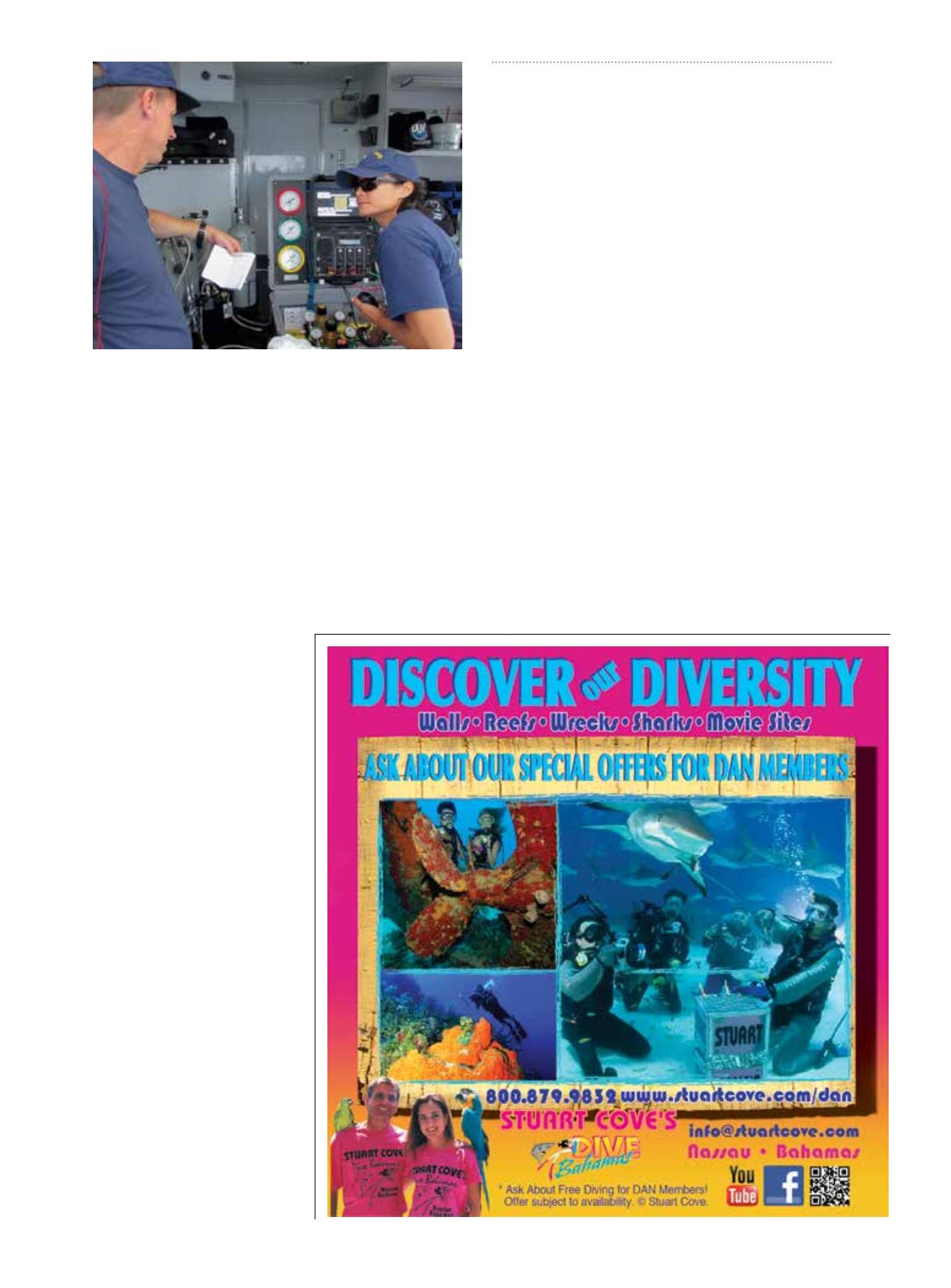

The patterns stand out dramatically on the ice as long
as it’s a sunny day.
As part of its training agreement with the Navy, the
Coast Guard assigns six full-time trainers to NDSTC.
Another seven work at the “dunker” at the Rescue
Swimmer school in Elizabeth City, N.C. Dunkers are
mock-ups of helicopter or small-boat interiors that
drop and capsize in a pool (often in simulated darkness
and storm waves) to train aviators and sailors to escape
from a water crash.
Other interesting jobs done by Coast Guard divers
include habitat surveys of endangered sea grasses and
corals off Florida to see if
navigation buoys need to be
moved and post-Hurricane
Sandy underwater inspections
of newly created hazards
to navigation. Poststorm
assessments such as that, along
with oil and chemical spills,
have gotten program managers
focused on developing
contaminated-water diving
capability for the lockers.
Back in Alameda, Pearsall
complains to Geri Cabrera and
the others, “This gray muck
really clouds up,” as he scrapes
the mud off his dive boots,
which he used to walk across
the not really contaminated
but certainly not pristine
bottom of Alameda Bay.
One of only two women in
the program, Cabrera, who
grew up in Guam, is a pretty
typical Coast Guard diver. “In
2007 I was asked, ‘Can you do
pull-ups?’ ‘Yeah, I can do pull-
ups,’ I said; I guess that’s the
issue they had with women,”
Cabrera says. “So I qualified and began diving with
MSST Honolulu while also driving a 25-foot tactical
boat because diving was still collateral duty. Later I
dived the Pacific off the buoy tender
Sequoia
and then
came to San Diego before moving on to Operation Deep
Freeze [aboard the Coast Guard icebreaker
Polar Star
]
for five months to McMurdo Station. So I’ve dived on
untouched corals in the Pacific and in cold Antarctic
waters. I have had the best of both worlds while getting
to help people. I’d say my career’s been blessed.”
Now the recreational diving community stands to
benefit from the Coast Guard’s growing interest in
diving. Since the Coast Guard investigates all maritime
accidents, the dive program recently wrote a guide to
help nondiving investigators better understand the
factors that contribute to diver injuries and fatalities.
Having themselves emerged out of a deadly incident,
the dive lockers are seriously committed to putting
safety first while also living their service’s motto:
Semper paratus
— Always ready.
AD
ALERTDIVER.COM|
49
DV1 Geri Cabrera and Chief Petty Officer Lucas Spencer
monitor a diver using the XLDS.
Opposite:
MK1 Michael Pearsall enters the water for
a training dive in Alameda, Calif., using the extreme
lightweight diving system (XLDS).
DAVID HELVARG
















